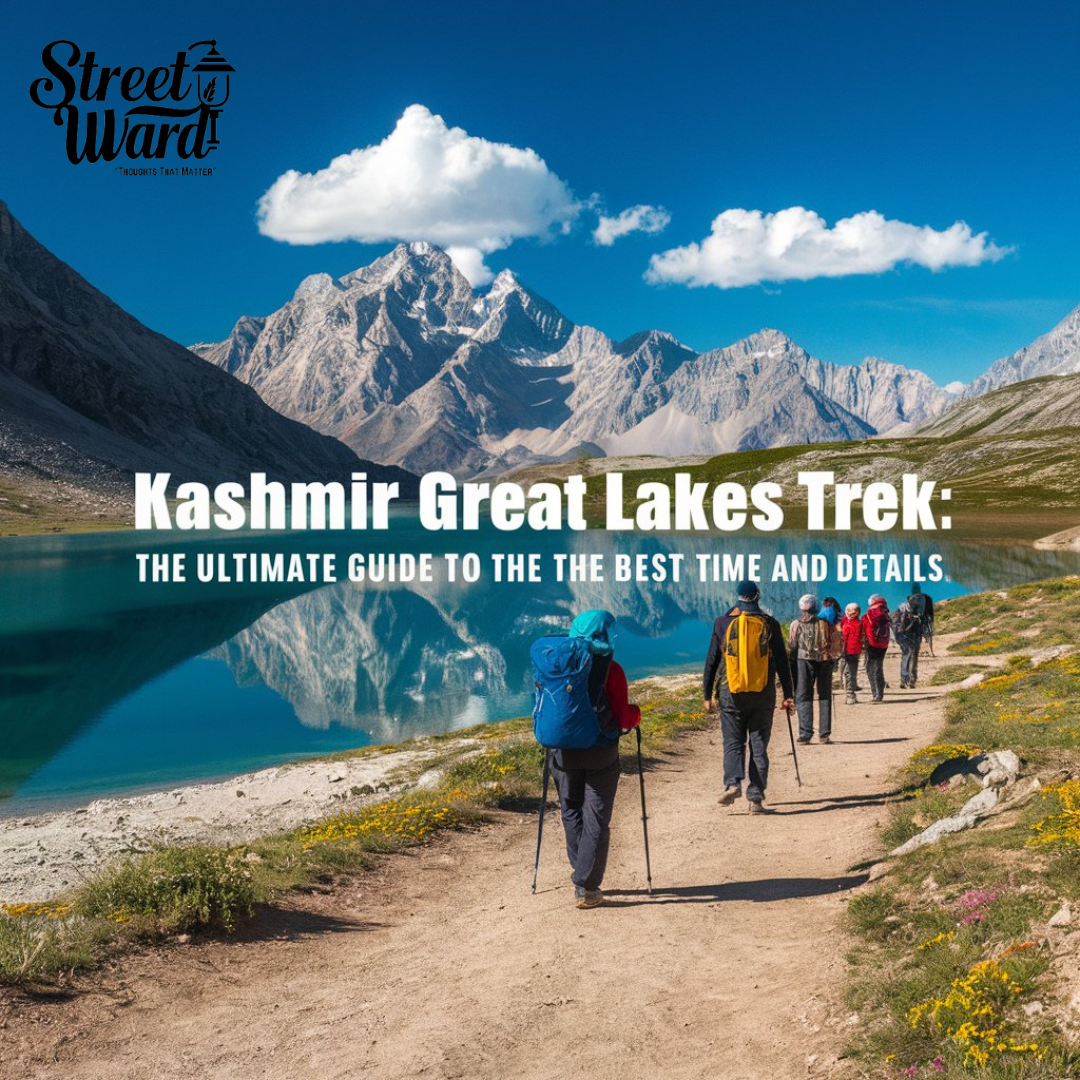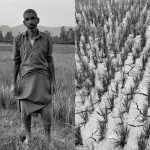Kashmir Great Lakes Trek: The Ultimate Guide to the Best Time and Details in 6 Steps
The Kashmir Great Lakes Trek is often regarded as one of the most breathtaking treks in India, offering a surreal blend of alpine meadows, shimmering lakes, and majestic mountain ranges. Nestled in the lap of the Himalayas, this trek provides an unparalleled experience of nature’s pristine beauty. However, to truly capture the essence of this trek, timing is everything. Here’s a comprehensive guide on the best time to embark on the Kashmir Great Lakes Trek and what to expect during this adventure.
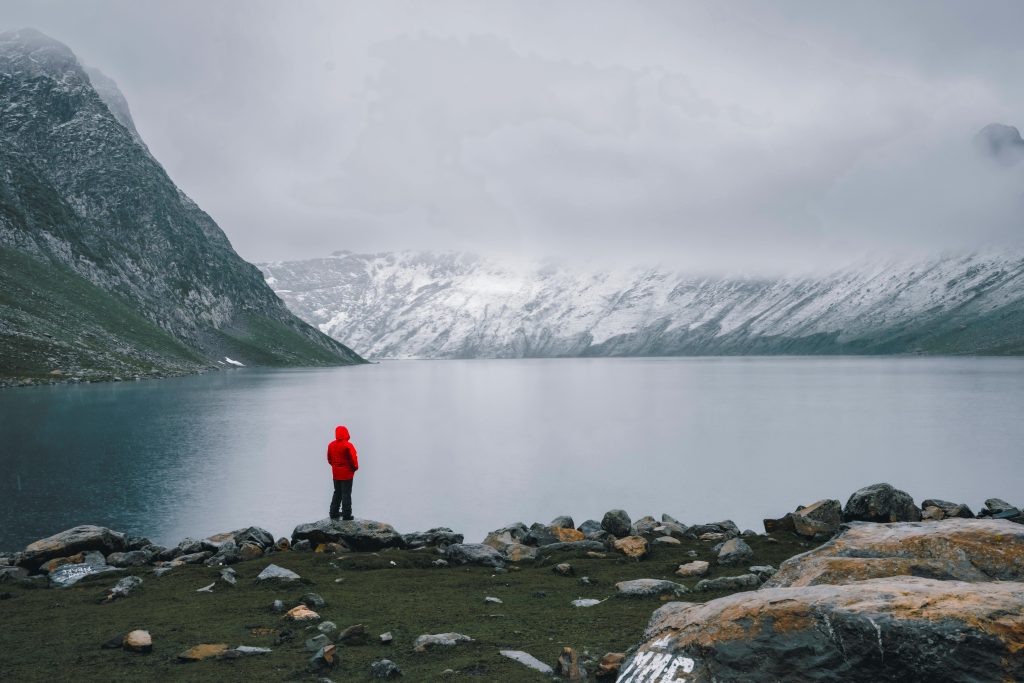
Best Time to Trek
The Kashmir Great Lakes Trek is best undertaken between late June and early September. This period offers the most favorable conditions for trekkers, ensuring safety and the best visual experiences.
- Late June to Early July:
- Snow-Capped Landscapes: During this time, the higher reaches of the trek are still blanketed in snow, creating a winter wonderland effect. The contrast of snow against the lush greenery of the meadows is a sight to behold.
- Blooming Meadows: The lower altitude meadows start to bloom with a variety of flowers, offering a colorful foreground to the snowy backdrop.
- Cool Temperatures: Expect cool temperatures, with daytime highs ranging from 15°C to 20°C and nights dipping to around 5°C to 10°C. Proper winter gear is essential during this period.
- Mid-July to Mid-August:
- Peak Flower Bloom: This is when the meadows are in full bloom, showcasing a vibrant palette of wildflowers. The famous alpine meadows of Vishansar, Gadsar, and Satsar are at their most colorful.
- Moderate Snow: The snow in the higher altitudes begins to melt, making the trails more accessible and safer. However, the patches that remain add to the trek’s beauty.
- Pleasant Weather: The weather during this period is relatively stable, with daytime temperatures ranging from 20°C to 25°C and nighttime temperatures around 10°C to 15°C. The clear skies offer perfect conditions for stargazing.
- Late August to Early September:
- Golden Meadows: As the season transitions from summer to autumn, the meadows take on a golden hue, adding a different dimension to the trek’s scenery.
- Fewer Crowds: This period sees a drop in the number of trekkers, offering a more peaceful and solitary experience.
- Cooler Evenings: The temperatures start to dip as autumn approaches, with daytime highs around 15°C to 20°C and cooler nights that may require extra layers.
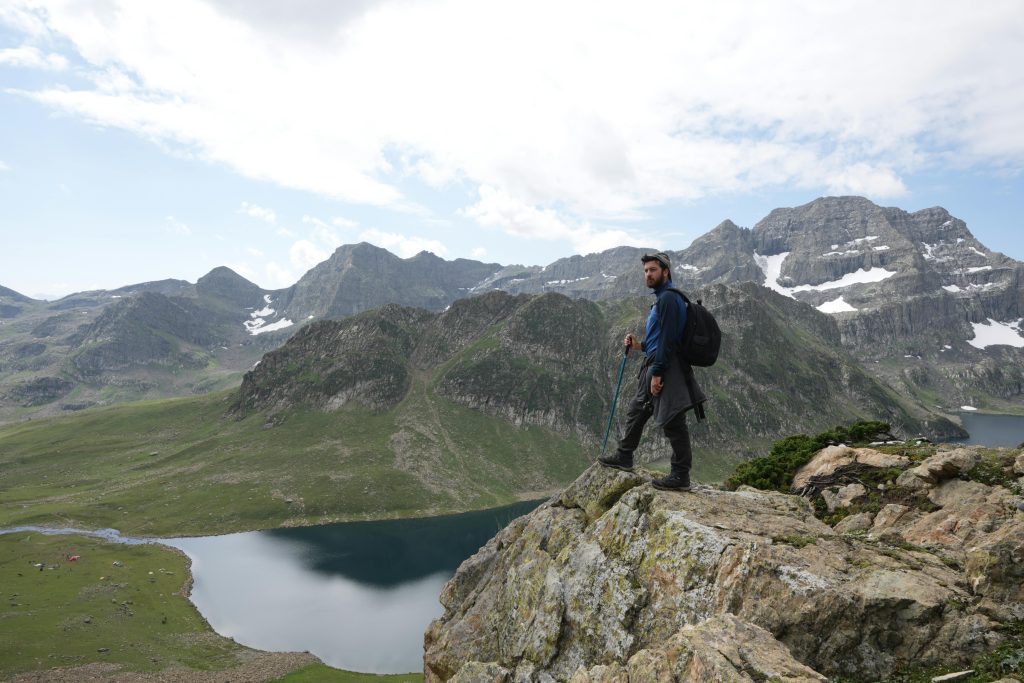
Table of Contents
Trek Highlights and Details
The Kashmir Great Lakes Trek spans approximately 70 kilometers and typically takes around 7 to 9 days to complete. The trek begins at Sonamarg and ends at Naranag, covering some of the most stunning landscapes in the Himalayas.
- Sonamarg (Day 1): The trek begins at Sonamarg, a picturesque valley known for its lush meadows and snow-capped peaks. The first day involves a gradual ascent through dense forests of pine and maple, offering glimpses of the Sindh River below.
- Nichnai Pass (Day 2): The second day is challenging, as trekkers cross the Nichnai Pass at an altitude of 13,500 feet. The pass offers panoramic views of the surrounding mountains and valleys, making the effort worthwhile.
- Vishansar and Kishansar Lakes (Days 3-4): The next two days are spent exploring the twin lakes of Vishansar and Kishansar. These crystal-clear lakes are fed by the melting snow from the surrounding peaks, and their turquoise waters reflect the sky and mountains, creating a mesmerizing effect.
- Gadsar Lake (Day 5): Known as the ‘Lake of Flowers,’ Gadsar Lake is surrounded by colorful wildflowers and is often considered the most beautiful lake on the trek. The lake is also known for its trout population, making it a popular spot for fishing.
- Satsar and Gangbal Lakes (Days 6-7): The final two days involve trekking through the Satsar Lakes, a series of seven interconnected lakes, before reaching the twin lakes of Gangbal and Nundkol. These lakes are nestled at the base of Mount Harmukh, one of the highest peaks in the region.
- Naranag (Day 8-9): The trek concludes with a descent to Naranag, passing through lush meadows, dense forests, and ancient pine groves. The village of Naranag is also home to ancient ruins and temples, adding a cultural touch to the end of the trek.
Essential Tips
- Acclimatization: Given the high altitudes, it’s crucial to acclimatize properly. Spend a day or two at Sonamarg to get used to the altitude before starting the trek.
- Gear Up: Proper trekking gear is essential, especially in early summer when snow is abundant. A good pair of waterproof trekking boots, warm clothing, and a reliable tent are must-haves.
- Stay Hydrated: Altitude can cause dehydration, so make sure to drink plenty of water and carry water purification tablets.
- Guided Treks: While experienced trekkers can do this trek independently, it’s advisable to go with a guide or join a trekking group, especially if it’s your first time.
Each night, trekkers set up camp in breathtaking locations, often right by the lakes or in lush meadows. Falling asleep to the sounds of nature and waking up to stunning views is an experience like no other.
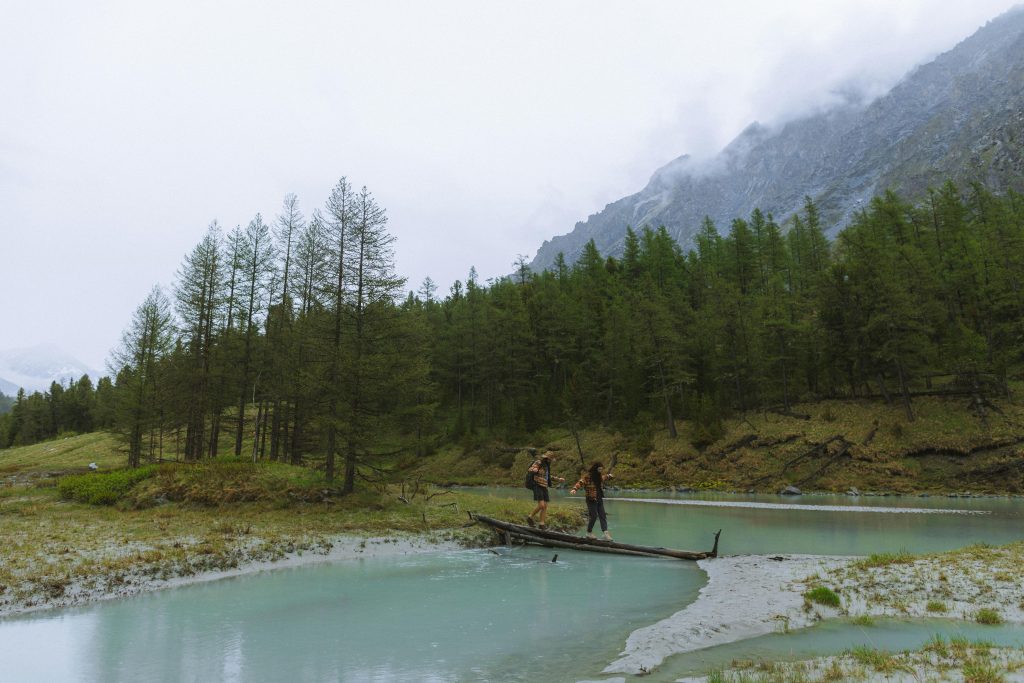
Conclusion
The Kashmir Great Lakes Trek is a journey through one of the most beautiful regions of the Himalayas. From the vibrant meadows of early summer to the golden hues of autumn, each season offers a unique perspective of this trek. By choosing the right time to visit, you can ensure a safe, enjoyable, and unforgettable experience amidst the grandeur of Kashmir’s great lakes.





